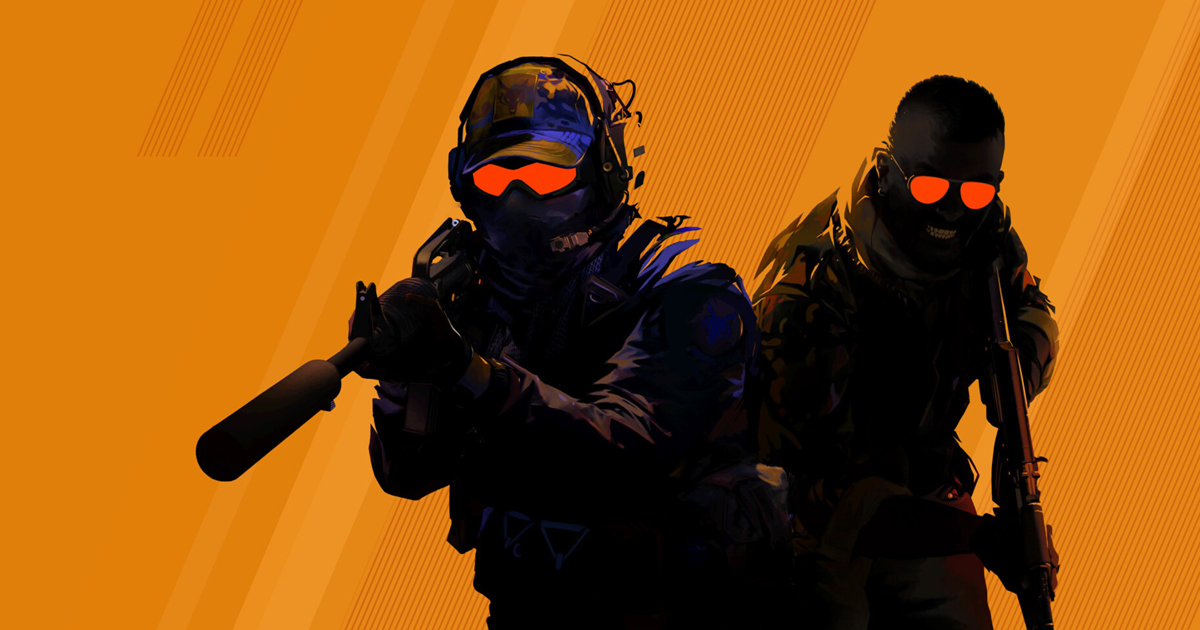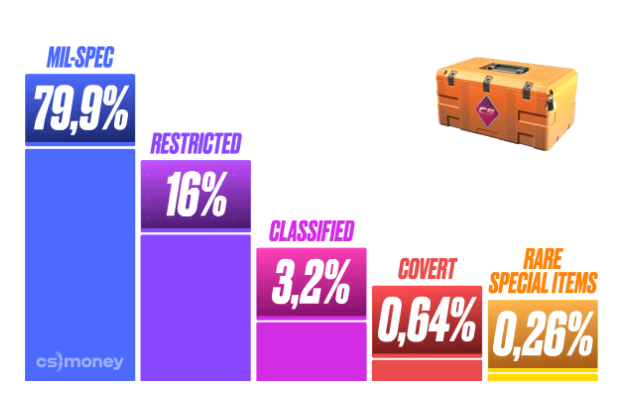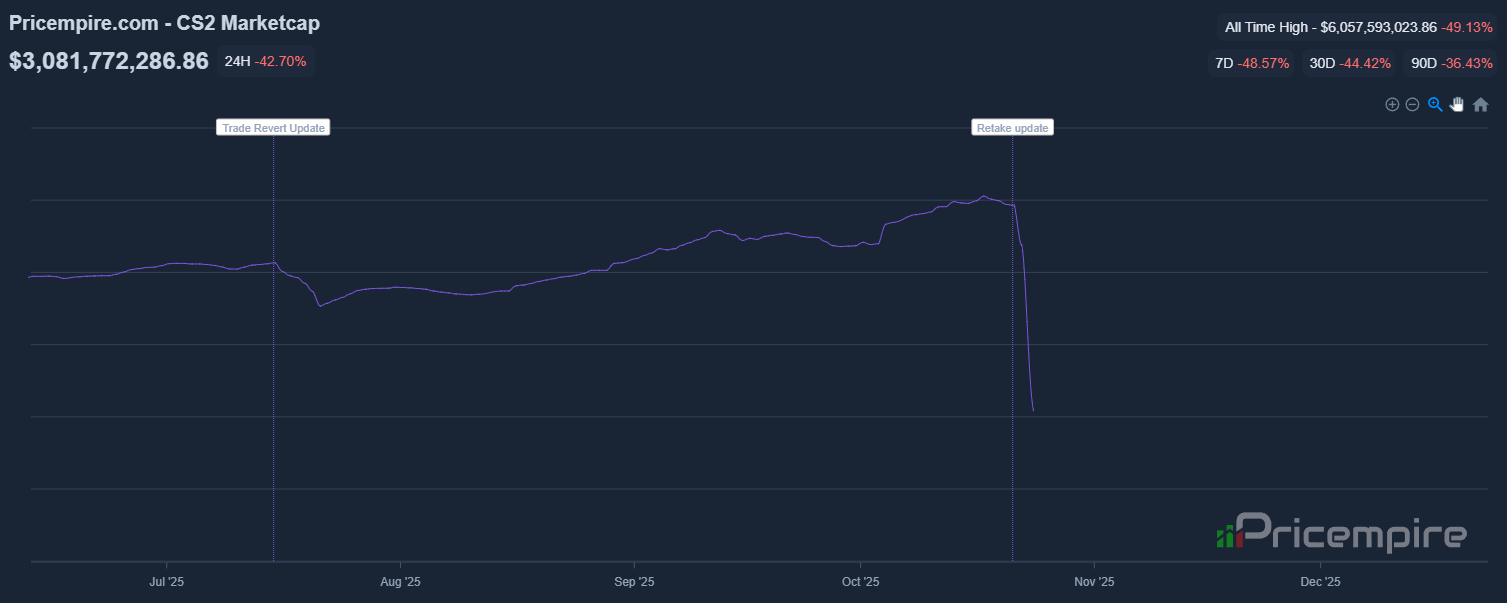"Further growth would very likely lead to regulation," RUNCASE on the situation surrounding the decline of the skin market for Counter-Strike 2
Yesterday, the market capitalization of skins for the evergreen hit Counter-Strike 2 dropped from $5.9 billion to $4.2 billion. Today, it fell even further. The reason is the new game functionality that allows some skins to be traded for others. We delve into the situation with expert commentary.
What is the skins market?
In Counter-Strike 2, there are cosmetics—visual designs that only influence the appearance of items (knives, pistols, rifles, and others). These are called skins.
Most players receive skins as rewards after a match or from cases, which are given out for free in the game.
However, there is another common way to obtain skins and cases—by purchasing them from other players. This is done either through Steam's marketplace or via third-party services.
The cost of skins can reach astronomical figures. Top-tier cosmetics for the game can go for hundreds of thousands of dollars.
At its peak, the entire game cosmetic market reached $6 billion.
What happened?
On October 23, the total value of all Counter-Strike 2 items declined by $1.7 billion—to $4.2 billion at one point.
Immediately, social media was flooded with dozens of unverified reports claiming that several players had taken their own lives due to the market crash.
On Steam forums dedicated to the game, threads surged to the top with titles like "Valve Kills People," "My Investor Friend Committed Suicide," "I Lost My Savings," and the media circulated the phrase "Gabe Reaps a Bloody Harvest."
Why did this happen?
The crash and the ensuing uproar were triggered by an update for Counter-Strike 2 that expanded the existing Trade Up Contract mechanic.
The essence of the mechanic is exchanging a group of skins for others. The catch is that this mechanic doesn't apply to all types of items.
For instance, previously, knives or gloves could not be obtained through trading. They could only be acquired from cases or on marketplaces.
The possibility of obtaining skins for knives and gloves through the case mechanic was minimal—the drop rate was in the hundredths of a percent.
To illustrate: if the drop rate from a regular case for the highest rarity items—'red' (also known as Covert or 'Secret')—was 0.64%, then knives or gloves would only drop in 0.26% of cases.
As a result, skins for knives and gloves on marketplaces became some of the priciest in the game.
The update "broke" the previous economy
It enabled the exchange of five 'red' items for one knife or gloves, providing another channel for acquiring extremely rare items.
In essence, this allowed the exchange of several skins, which collectively might be valued at $100, for a skin that was previously worth tens or even hundreds of times more.
"A case in point: the streamer Avelon bought a knife for about 2 million rubles, and now a similar item costs mere tens of thousands of rubles," shares Artem Klin, CEO of RUNCASE.
The market instantly reacted by raising the price of items used to craft knives and gloves, which weren't previously valuable, and dropping the prices of previously rare skins.
"Demand from regular players increased. They're buying certain items to craft gloves through exchange. Previously, there was a real hunt for the top segment, making them very expensive; now, such items can be obtained much cheaper," explains Klin.
Why did Valve make changes to the game economy?
Valve has not commented on the situation. It's possible that they did not anticipate such an intense reaction to what was, from a development perspective, a minor update.
However, there are hypotheses suggesting that the company wanted to increase the importance of battle passes, which don't contain knives and gloves.
Artem Klin, on the other hand, believes Valve is interested in making the skins market smaller. The company wants to avoid attracting unwanted attention:
"Recently, the skins market was valued at about $6 billion. When the market reaches such a size, government oversight almost inevitably increases. It's logical to assume that Valve wants to reduce the 'real money attachment' to skins and, accordingly, the overall market size by lowering prices. Otherwise, further growth would likely lead to additional regulation."
If this is the case, then the plan succeeded. At the time of publishing, the skins capitalization had shrunk to $3 billion.


